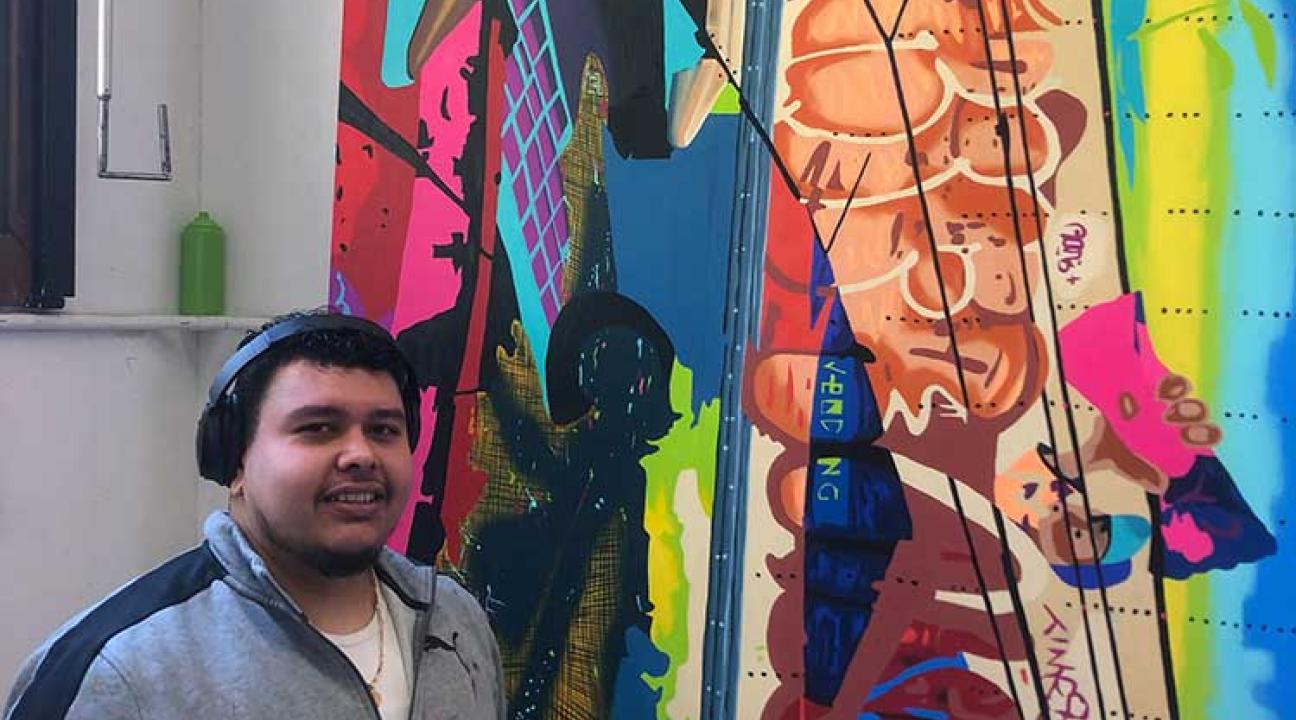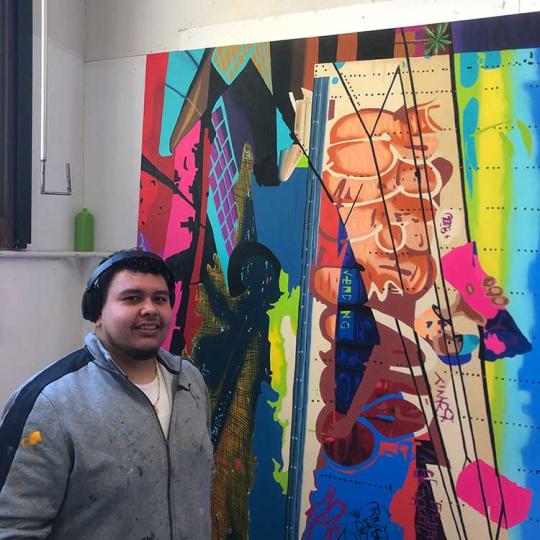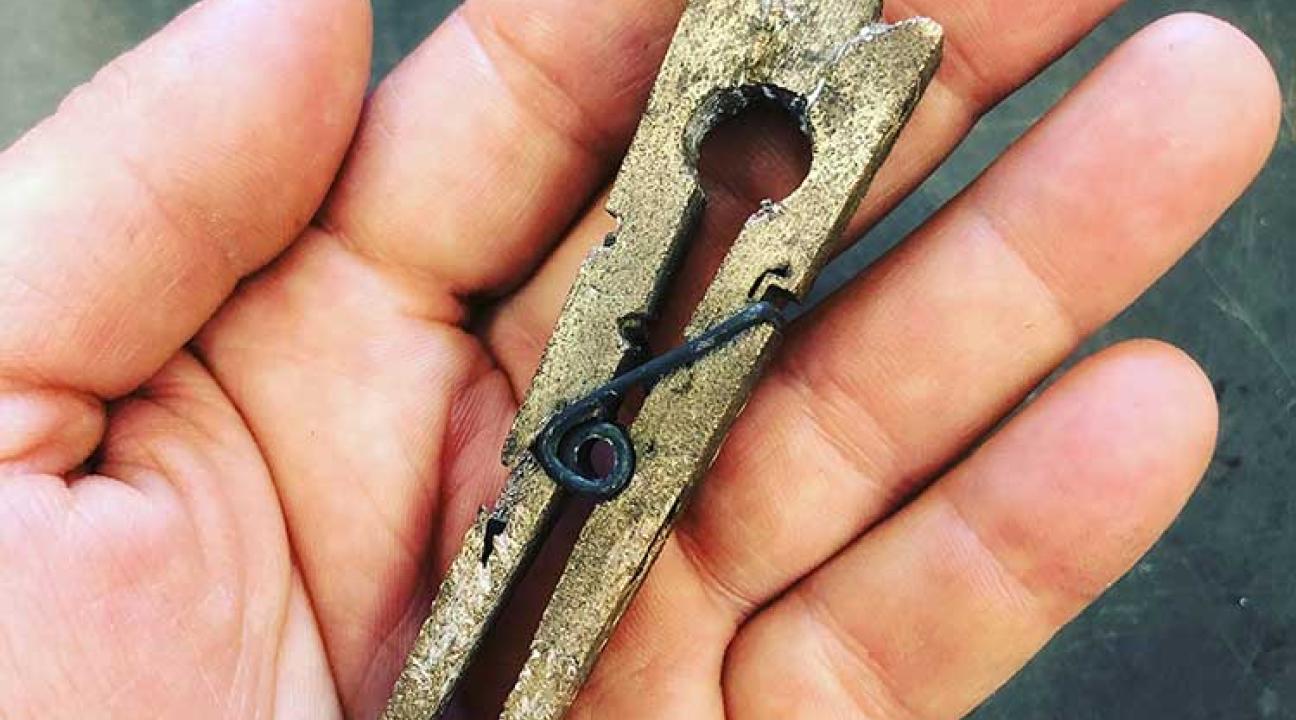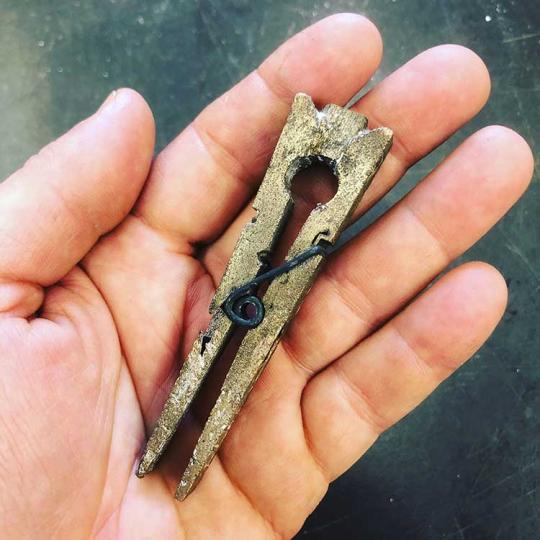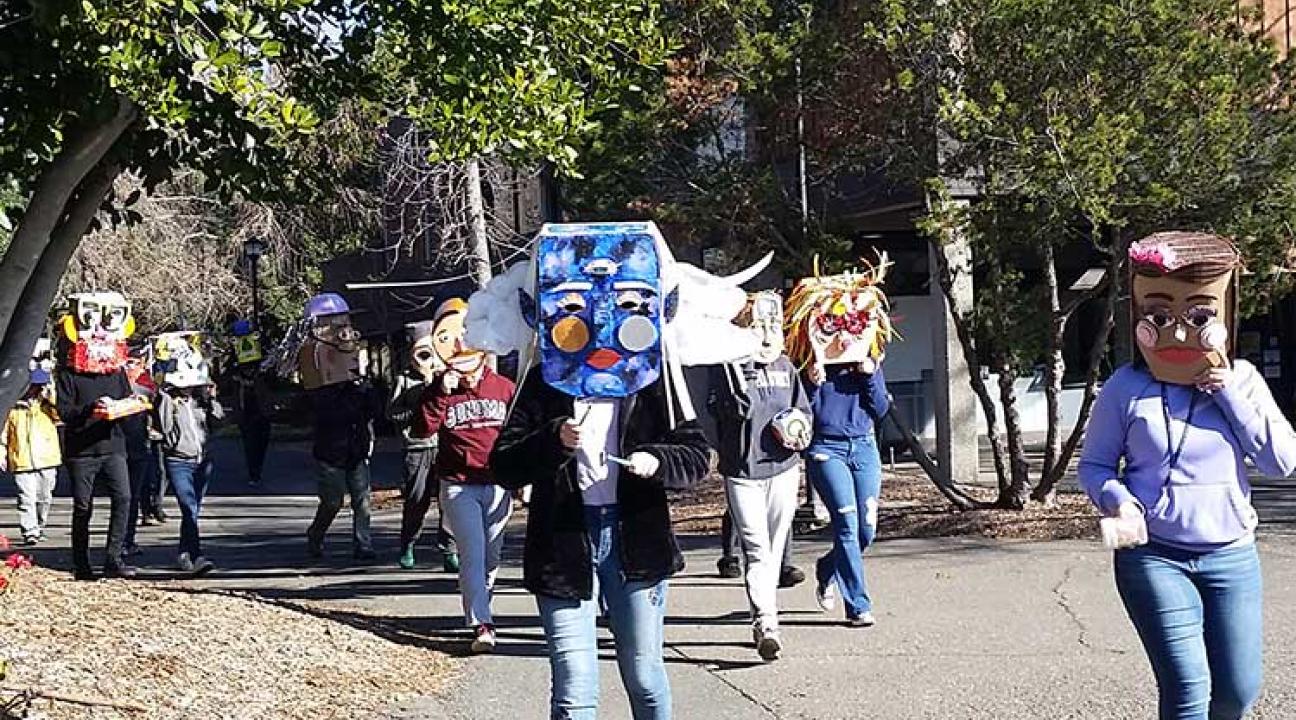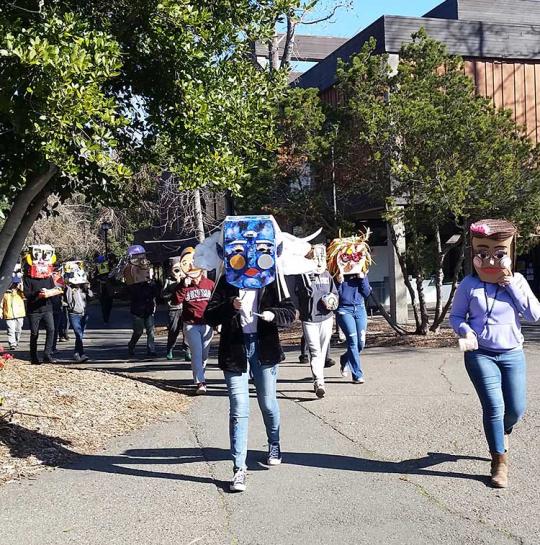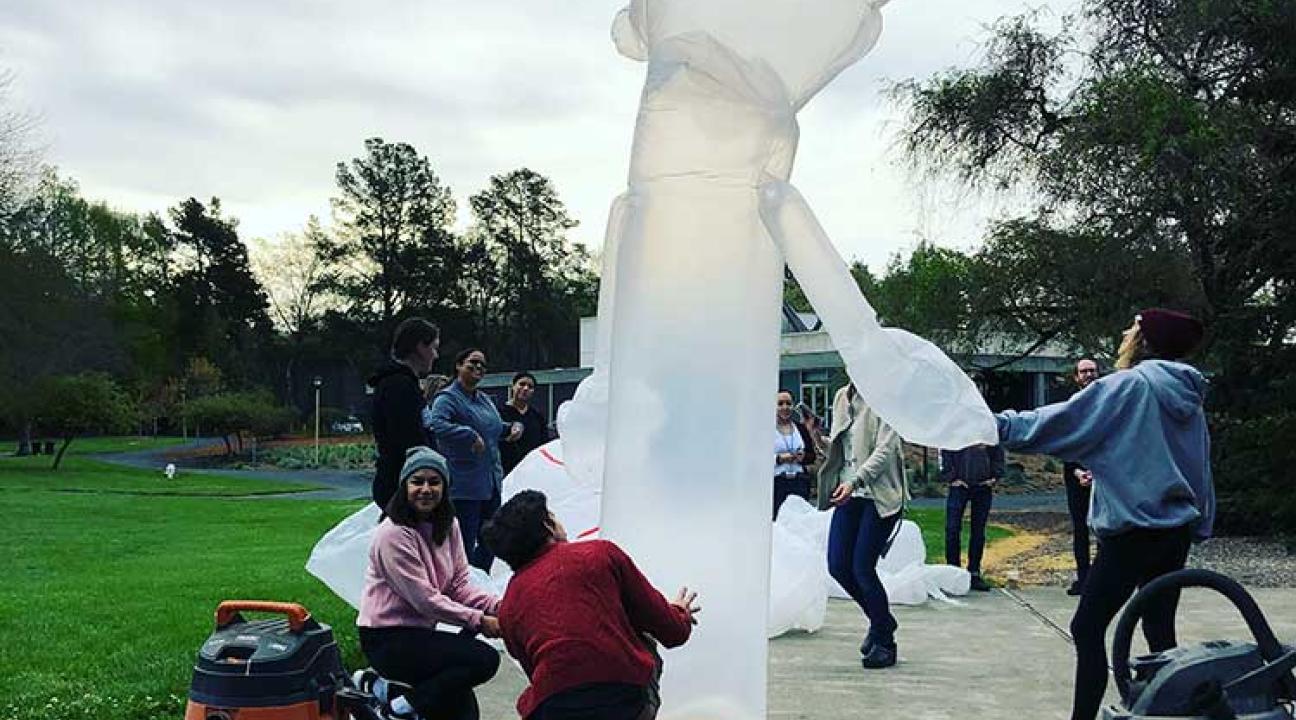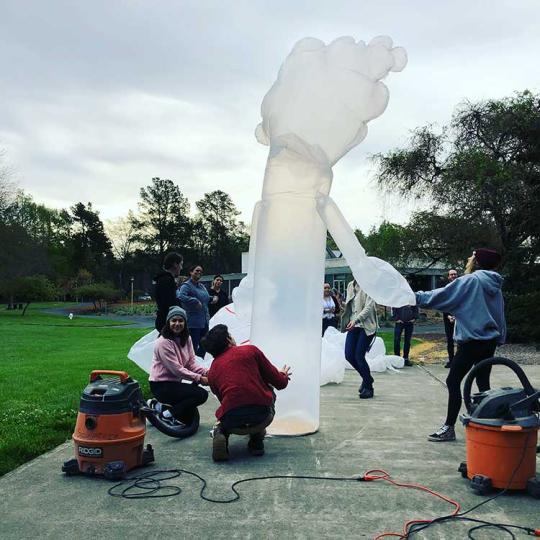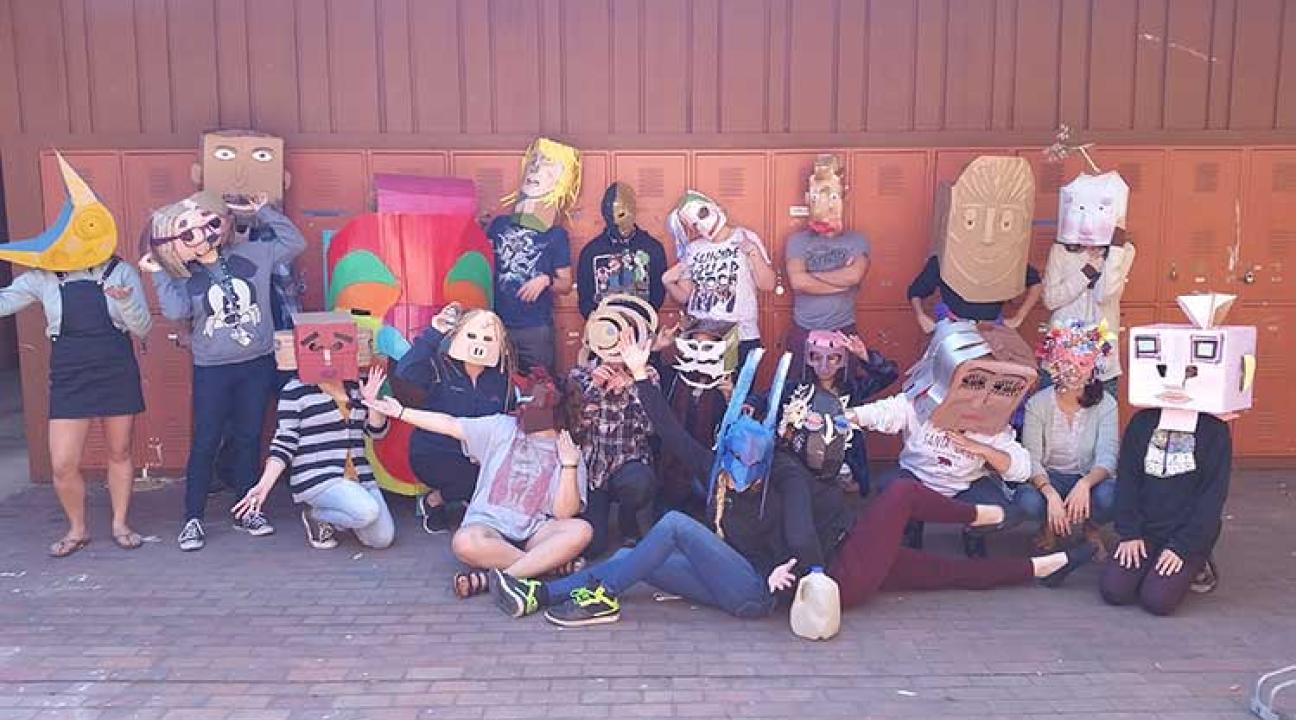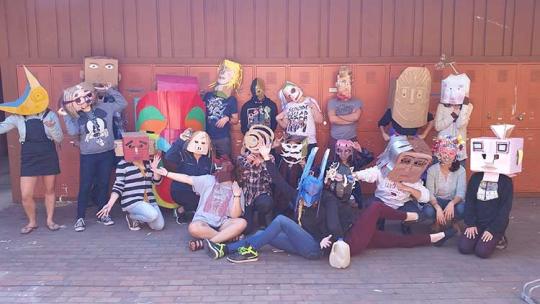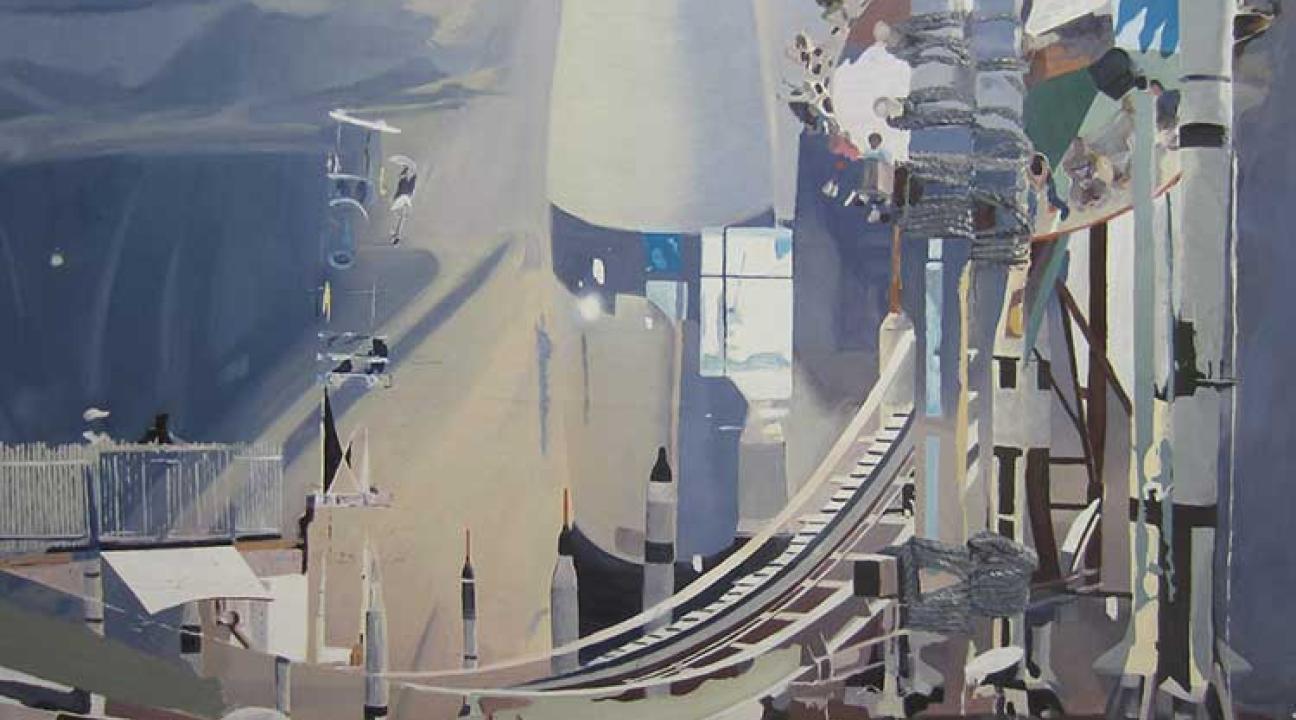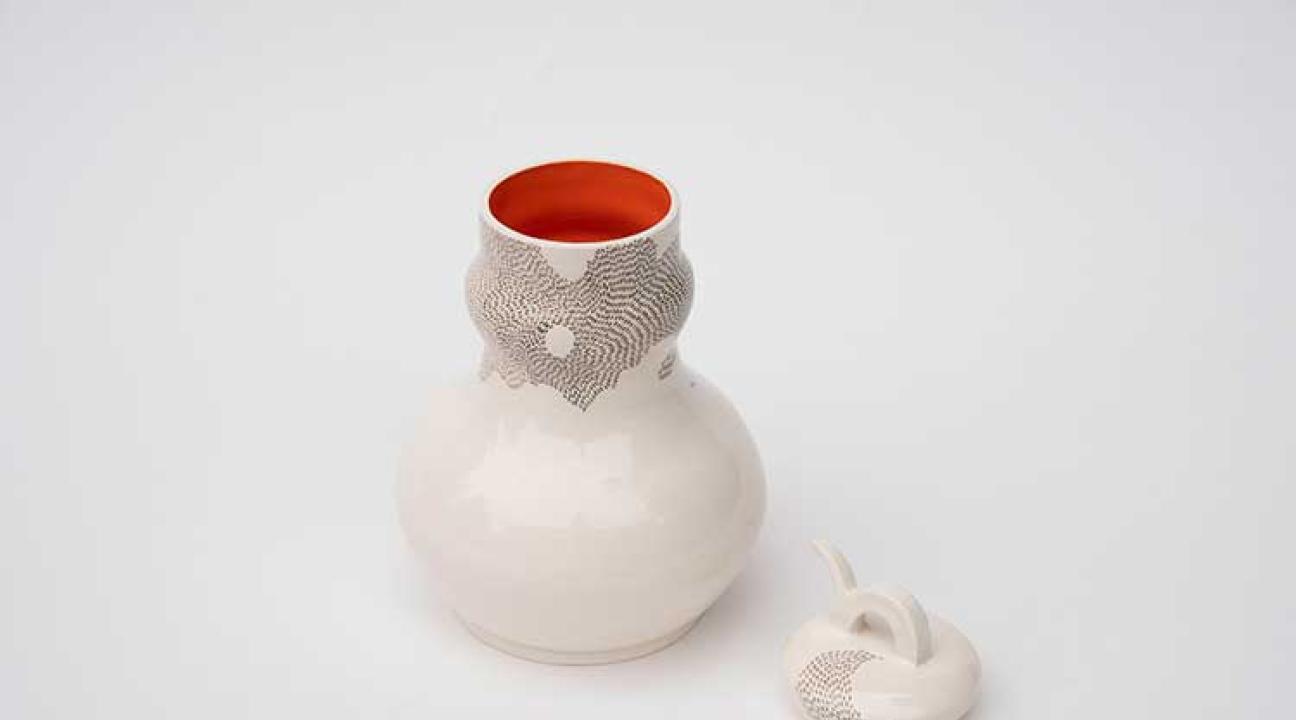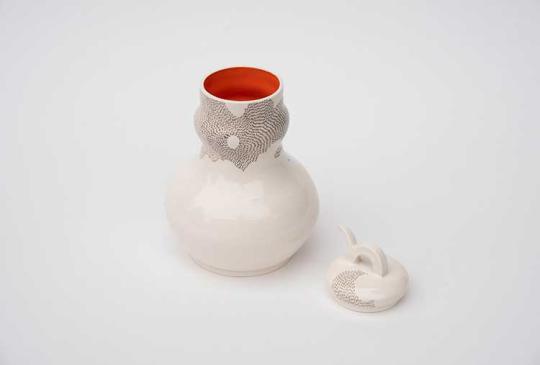About the Department of Art
Designed specifically for the pursuit of art practices and the study of arts management, the department facilities are located in one of the best-equipped physical plants in the country. The programs are directed by a faculty of professional artists and scholars dedicated to their students and to the pursuit of their own creative and scholarly work. Students also have access to developing new technologies in a number of areas.
It is the departmental philosophy that a grasp of the history and theory of art is indispensable for the studio major and that creative activity is invaluable to the student of art history.
The art studio curriculum is designed to develop the ability to create, analyze, interpret and evaluate art. The department strives to stimulate creativity and competency as students develop their skills and knowledge of materials and technologies. Fundamental to the study of art is a belief in its potential to communicate ideas, emotions and values necessary for understanding and functioning effectively within the modern world. Faculty are committed to the recognition of individuality and unique accomplishment. They work closely with each student to encourage personal direction and ideas.
Sonoma State University is a fully accredited member of the National Association of Schools of Art and Design.
Career Opportunities
The programs in the Department of Art are committed to academic excellence and the acquisition of skills of visual analysis and synthesis. We offer basic skills and access to new technologies as sound preparation for graduate study and teaching, as well as for professional careers in the arts. In addition, as preparation for entering a diversity of related fields, students may combine knowledge of the arts with expertise in a second area, such as business, law, film and television, museum, gallery or archival management. Consult a department advisor for specific advice about career planning.
Our History
The University
Sonoma State University’s beautiful 274-acre campus is located in Sonoma County wine country, an hour north of San Francisco. The campus offers the ideal setting for teaching and learning and access to a community of rich cultural, environmental, and recreational opportunities. Founded in 1960, Sonoma State University is one of the 23 campuses of the California State University system. As members of the largest public higher educational system in the nation, we provide accessible, high quality education to more than 9000 students. Sonoma State University is proud to be a Hispanic Serving Institution committed to achieving the goals of equal opportunity and endeavors to employ faculty and staff reflecting the ethnic and cultural diversity of the region and state.
The Department
For nearly half a century, Sonoma State University’s Department of Art has been the hub of visual art on campus and in Sonoma County. As a center of creativity and experimentation, the department provides rigorous undergraduate education in the study and practice of the visual arts. Our programs offer in-depth instruction in technique, concept, and history of art.
Our students pursue studies leading to the BA and BFA degrees in art studio. Art studio degree emphases are available in 2D, 3D and Photo/Media. Committed to the recognition of individuality and unique accomplishment, faculty work closely with students to encourage personal direction and ideas. We strive to create a diverse and inclusive faculty serving an increasingly diverse student body.
Designed specifically for the pursuit of studio art practices and the study of art history and museum and gallery studies, the department facilities are located in one of the best equipped physical plants within the California State University system. The Art Building has a total of 46,604 square feet of space with an instructional net of 30,485 square feet.
The Department is a fully accredited member of the National Association of Schools of Art and Design.
Our Commitment
Guided by our core values, Sonoma State University offers an exceptional educational experience that fosters intellectual, cognitive, social, and personal growth. As the only member of the Council of Public Liberal Arts Colleges in California, we are uniquely positioned to foster ethical exploration, civic engagement, social responsibility, and global awareness combined with a solid foundation in an academic discipline. We have a strong commitment to graduating students who have the ability to think critically and communicate effectively in an ever-changing world. The unique campus culture fosters our Seawolf Commitment to integrity, respect, excellence, and responsibility and is integrated into all campus life. We nurture inclusive excellence through a celebration of the rich diversity of our local communities and our interconnected global economy. Members of the University community are expected to work effectively with faculty, staff, and students from diverse ethnic, cultural, and socioeconomic backgrounds. SSU is especially interested in candidates who make contributions to equity and inclusion in the pursuit of excellence in teaching, scholarship, and service.



